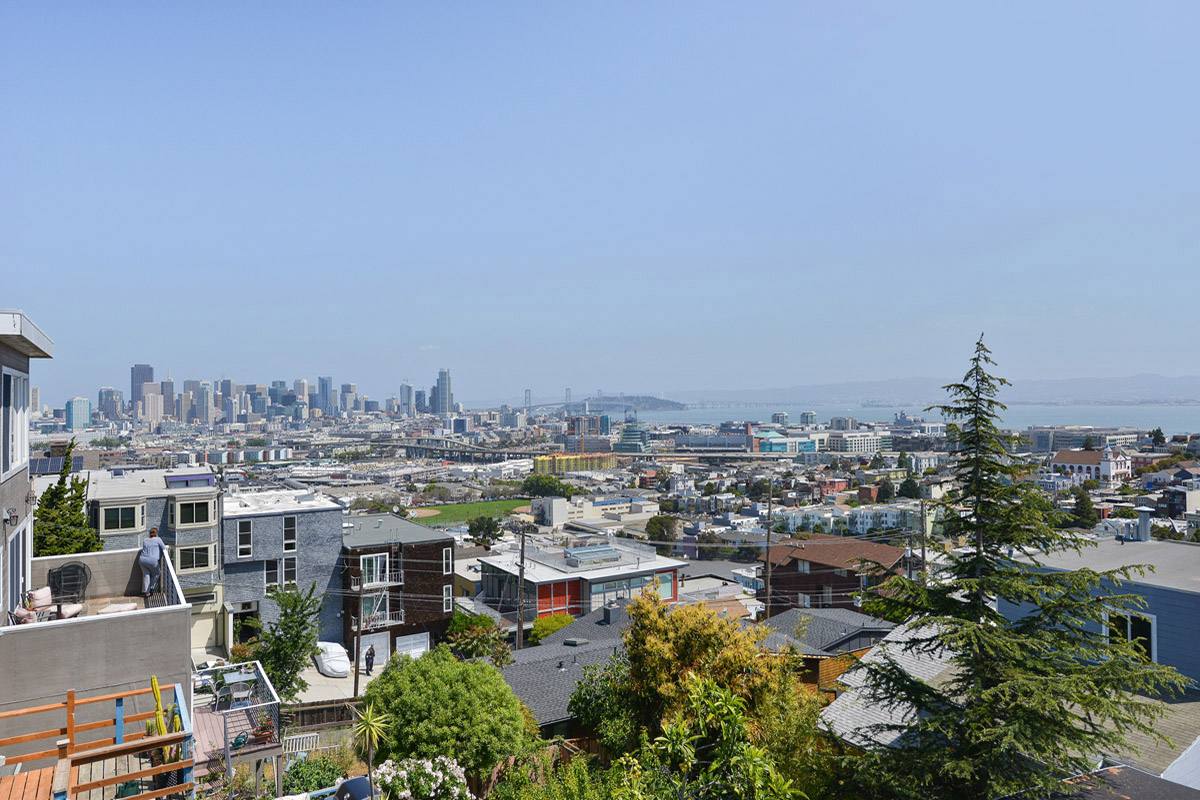FEBRUARY 23, 2017 BY CHRIS COLE
On Potrero Hill, you can relax in brilliant sunshine while watching fog engulf the rest of the city. Bounded roughly by 16th, Third and Cesar Chavez streets and Potrero Avenue, the neighborhood is relatively isolated by freeways and large tracts of industrial landscape, giving Potrero Hill its own pace and a feeling of distance from “San Francisco.”

The neighborhood’s origins extend back at least to an 1835 land grant to Don Francisco de Haro to graze Mission Dolores’s cattle at the potrero nuevo (“new pasture”). Gold rush squatters started pushing the herd aside and began the first of many waves of urbanization and immigration: Scots in the 1860s, then Irish, Chinese, Russians, Mexicans and finally African-American Southerners in the 1940s, building battleships at the bustling wartime shipyards.
While families lived on the hill, flatland manufacturing by firms like U.S. Steel, the Union Iron Works, the Western Sugar Refinery, Bethlehem Shipbuilding Co. and American Can Co., among others, ensured that the area remained largely industrial through most of the 20th century. But a combination of deindustrialization and the late-1990s Internet boom began driving the conversion of factories and warehouses into housing or offices.
New office construction continues on the north side, while condos rise on the hill’s eastern and southern edges, particularly in Dogpatch, the name given to the Third Street corridor between 16th and Cesar Chavez. Largely zoned for heavy industrial use, Dogpatch doesn’t have much going on past quitting time.
One part of Potrero Hill that has changed dramatically is the Safeway shopping complex along 16th Street, between Bryant and Potrero streets. From 1931 to 1959, this was the site of Seals Stadium, an 18,600-capacity venue that hosted the San Francisco Seals and the Missions of the Pacific Coast League. When the then-New York Giants arrived in San Francisco, they played the 1958 and 1959 seasons at Seals Stadium while Candlestick Park was being built.
Potrero Hill’s primary shopping drag is on 18th Street, between Connecticut and Texas streets, along which you’ll see fewer strollers — and fewer weirder dogs — than in already-gentrified neighborhoods like the Inner Sunset and Noe Valley. In spite of increasing yuppiness, 18th Street remains come-as-you-are.
The hill is also where O.J. Simpson grew up, and, as a result, even though Simpson never visited the area much after becoming famous, the hill has the nation’s densest remaining concentration of O.J. Simpson murals. One, on Connecticut at 17th Street, shows the former football great in his uniform, with later spray-painted details like blue devil horns. The other is at the Potrero Hill Recreation Center (see below).
The residential streets are unusually clean for San Francisco, and every house seems to have a small garden, flower box or tree planted out front. This tradition goes back a ways; witness a September 1963 Sunset magazine article in which Hill denizens, clad in jeans and Jackie Kennedy clam-diggers, landscape the twistiest stretch of Vermont Street. They hope against hope that the growing leptosporum will “one day hide the nearby freeway and its eight lanes of around-the-clock traffic.” The city donated irrigation water, a neighborhood group coughed up labor and cash for two new water meters and someone threaded all the irrigation pipe in his own machine shop — evidence of a level of neighborly cooperation that continues today.
Sorry we are experiencing system issues. Please try again.
